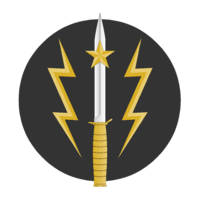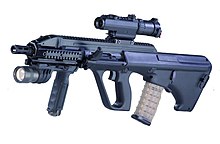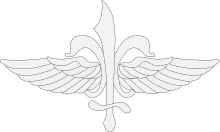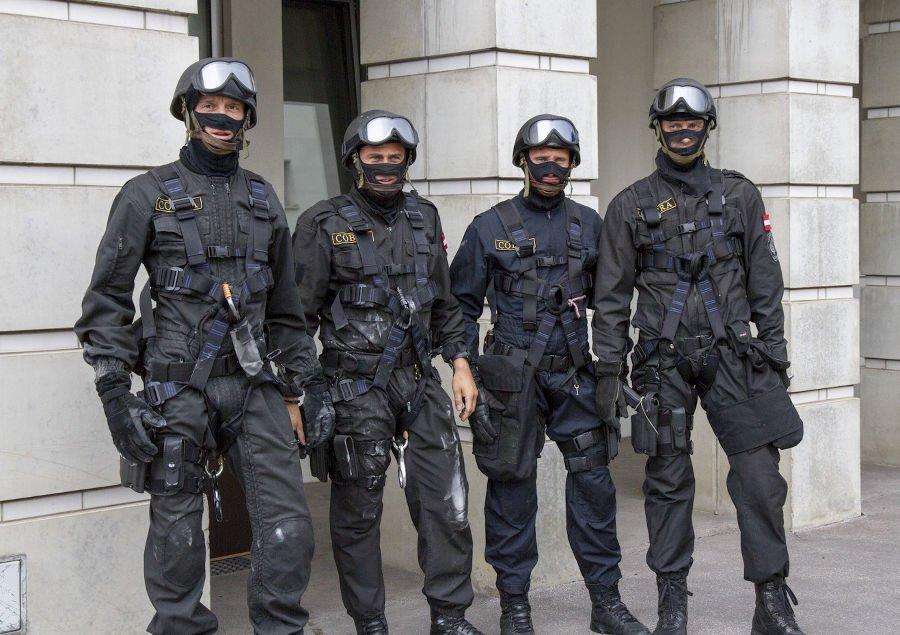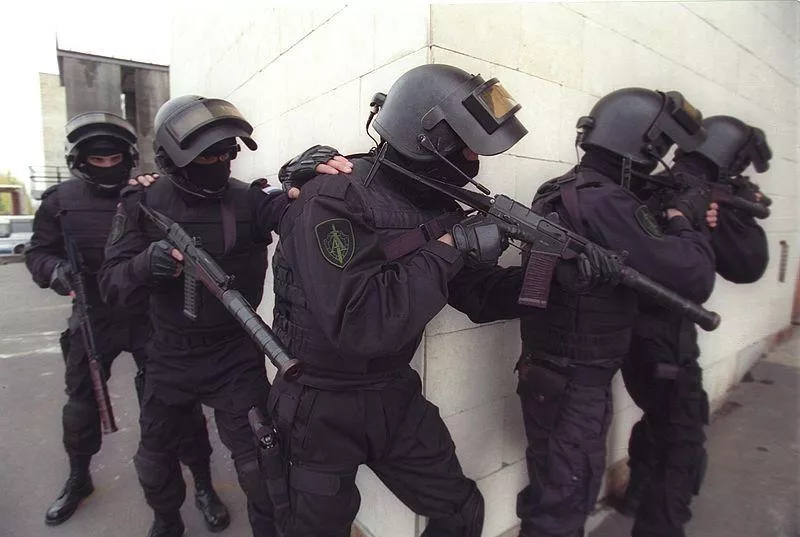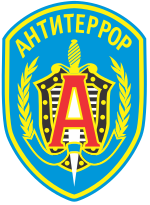SSG – Pakistan
In 1956, the Pakistani Army created its own special forces known as the Special Services Group (SSG). This force was modelled on the British SAS and US special-forces and its size remains highly classified. Selection for this force is rigorous and only 1 in 4 recruits end up making it through the nine-month training, airborne school and extensive hand-to-hand combat and physical conditioning elements. The SSG is trained for a variety of environments including mountain, desert, jungle and underwater. During the early Cold War, SSG forces trained and served alongside US special-forces. It is alleged some of these forces served in Afghanistan, fighting alongside the mujahedeen against the Soviets in the 1980s. India alleges that SSG forces have attacked their soldiers on more than one occasion in volatile border regions shared by the two nations. More recently, the SSG has focused on local anti-terrorist operations, taking part in ending the 2009 attacks on the Lahore police academy and rescuing the hostages of another 2009 attack on the Pakistan Military Headquarters.
Special Services Group (SSG)
Special Services Group Insignia
Active 23 March 1956—Present
Country
Pakistan
Allegiance
Pakistan Army
Branch
Pakistan Army
Type Special Operations Forces
Role Special Operations
Size 10 Battalions
Garrison/HQ Tarbela, Pakistan
Nickname(s) SSG Commandos
Maroon Berets
Army SS Group
Black Storks[1]
Motto Mann Janbazam (men of heart)
Colours Identifications Maroon and Sky blue
Anniversaries Pakistan Day: March 23
Engagements Operation Gibraltar
Indo-Pakistani War of 1965
Indo-Pakistani War of 1971
Soviet war in Afghanistan
Siachen war
Indo-Pakistani War of 1999
Operation Silence
War in North-West Pakistan
United Nations Military missions
War in Afghanistan
Operation Zarb-e-Azb
Commanders
Current Commander Major-General Abid Rafique,
General Officer Commanding
Noteable Commander Lt Gen Haroon Aslam
Operations:
Military operations
- The SSG was first used in 1965 in the State of Jammu & Kashmir. In an operation codenamed Gibraltar, their aims were continued reconnaissance, sabotage of Indian military facilities and the eventual liberation of Kashmir from Indian control, though the operation was unsuccessful.[16]
- The SSG lead Operation Clean Wash to eliminate a group of terrorists in Makkah in 1979.[17]
- In the Indo-Pakistani War of 1971 they were once again used, this time to assist regular infantry units and for non-conventional and rescue operations. In the face of the massive political and military onslaught in East Pakistan, the SSG faced Indian forces in the theatre, suffering heavy losses and could do little to turn the tide of war.[18] Pervez Musharraf commanded a company of commandos during the war.
- SSG troops arrested Sheikh Mujibur Rahman on the night of 25 March 1971 during Operation Searchlight. Upon his arrest, they sent a message to Dhaka Cantonmentheadquarters saying, "Big bird in the cage".]][citation needed]
- The SSG was active in Afghanistan in the 1980s during the Soviet invasion of Afghanistan, Also believed to have fought Soviet special forces in direct combat, SSG fought in local dresses, dressed up as Jihadi conducting covert and direct action missions.
- Again, when the balance of power shifted, it lead some covert operations against the very Afghan government (Taliban) that Pakistan (along with USA, Saudi Arabia and UAE) had once aided, this time as part of the allied forces in operation Enduring Freedom. The SSG has aided the capture of many senior Al Qaeda leaders, most notably Abu Zubaida and Khalid Shaikh Mohammed
- The SSG has worked with the US CIA's Special Activities Division and has been active inside the Federally Administered Tribal Areas (FATA) targeting al-Qaeda operatives for Unmanned Aerial Vehicle (UAV) Predator strikes.[19] These strikes have led to what has been described as highly successful counter-terrorism operations.[20][21]
- The SSG has also conducted operations on the Siachen Glacier against Indian positions at -30 temperatures on Ice covered Peaks.[citation needed]
- In addition, some covert operations in United Nations military missions in Bosnia and Herzegovina[citation needed], Somalia[citation needed] and Sierra Leone[citation needed] have also been executed by SSG operators.[citation needed]
- In Operation Black Thunderstorm, SSG troops abseiled from helicopters into Daggar, a town north-west of Islamabad, killing up to 50 militants.[citation needed]
- SSG were airdropped during Swat operation where they successfully took over Taliban hideouts at night, suffering some casualties against Killing dozens of Taliban[citation needed].
- SSG have been used in South Waziristan Operation as well in various missions to take key positions and Peaks in 2009[citation needed].
- SSG were used extensively in various missions as clearance force in close quarter combat scenarios in Operation Zarb-e-Azb[citation needed]
Counter terrorism operations[edit]
- In September 1986, Pan Am Flight 73 was hijacked by terrorists while it was refueling in Karachi. As negotiations stalled and the terrorists started to kill passengers, SSG stormed the plane. The SSG killed one hijacker and captured the rest.[citation needed]
- In February 1994, Afghan hijackers took over a school bus with 74 children and 8 teachers. They drove to the Afghan mission in Islamabad where they released 57 students but kept 16 boys and the teachers. The negotiations led nowhere and it was decided to free the hostages by force. The Pakistani authorities had somehow managed to inform the children of the impending raid.[22] The SSG commandos used a secondary explosion as a distraction and entered the room at the Afghan embassy where the hostages were being held, killing the three hijackers.[citation needed] The operation lasted about 20 seconds.[23]
- In May 1998, three members of the Baloch terrorists took over a PIA Fokker plane because they were angry at the government for conducting nuclear tests in Balochistan. As negotiations dragged, SSG commandos rushed the plane and apprehended all 3 hijackers. None of the passengers were harmed during the assault.[citation needed]
- In July 2007, the SSG was the main assault force which re-took the Lal Masjid from extremists. The SSG suffered 11 killed and 33 wounded.[24] On September 13, 2007 a suicide bomber killed at least 20 personnel of the SSG and injured dozens others at the officers mess of the sensitive cantonment area of Tarbela-Ghazi.[25] The blast has reported to been a vendetta attack by the Islamic fundamentalists who were attacked in the Red Masjid siege in July.[26] According to reliable sources a civilian wearing a white cap with a long beard walked with his bicycle towards the SSG mess and blew himself up there.[27]
- On 30 March 2009, SSG successfully participated in thwarting the 2009 Lahore police academy attacks.[28][29]
- On 10 October 2009, militants attacked the Pakistan Military Headquarters, taking hostage 42 civil and military officials. SSG commandos rescued 39 hostages and killed 9 militants, capturing one. The militants have been linked to Ilyas Kashmiri being a leading Al Qaeda commander operating alongside Tehrik-e-Taliban. A total of six SSG commandos and three hostages were killed in the operation. As reported by ISPR (Inter Services Public Relations) [2]. The operation was undertaken by SSG's Counter Terrorism Force.[30] Three more SSG commandos, injured during the operation, died in the hospital on October 12.[31]
- On 16 December 2014, SSG Commandos from the Zarrar Company were tasked with clearing an Army Public School which was raided by seven [32] Tahreek-e-Taliban (TTP) Terrorists in Peshawar. All Terrorists were eliminated and the school was cleared. Around 149 people, mostly Students aged between 12-16 were killed by the Terrorists. The school had a strength of about 1000, and due to SSG timely arrival, they were able to rescue about 840 people. Two SSG commandos were killed and 3 were injured.
Equipment:
The SSG is equipped with an array of modern weaponry which includes, Steyr AUG, M4 Carbine, M16 Carbine, RPA Heavy Sniper Rifle Range Master, AK-47, Anti Tank Grenade Launchers, Rocket Propelled Grenades, SIG 552 LR, HK G3, and Chinese Type-81/56 rifles,Colt and FN P90[38] and HK-MP5Submachine guns (many different variants). Light machine gun in use is Rheinmetall MG3 (locally produced along with HK G3s and MP5s). In sniper or Marksman role, the SSG CT (Counter-Terrorism) teams are equipped with Barrett M82, Finnish Tikka bolt-action rifles, Steyr SSG 69, POF Eye Corner shot gun and HK PSG1 and Dragunov SVDSemi-automatic rifles.Pistols include various Heckler & Koch & Glock models.
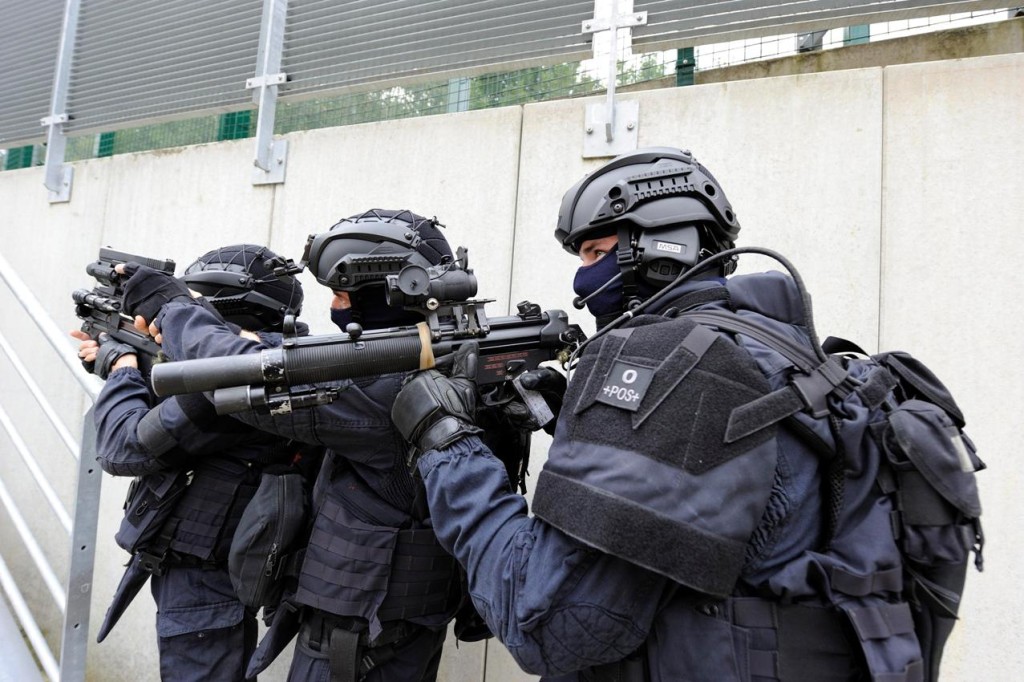
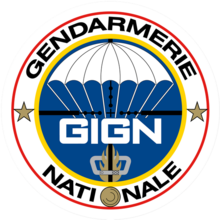
 France
France National Gendarmerie
National Gendarmerie









